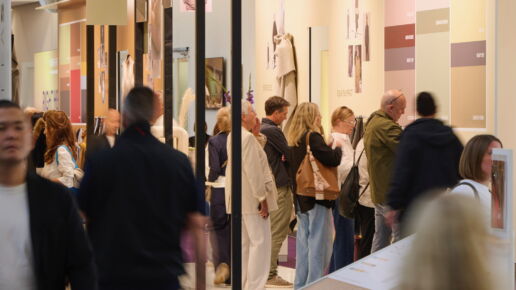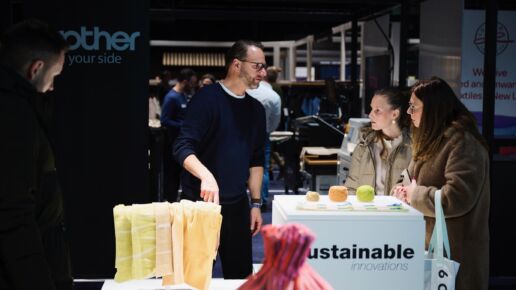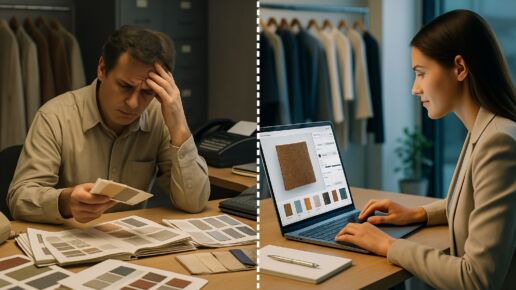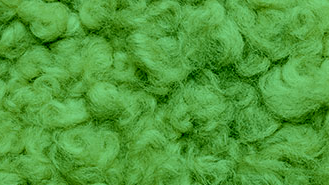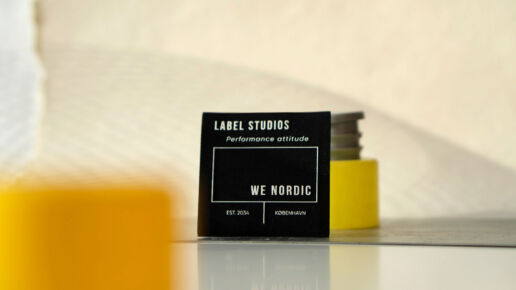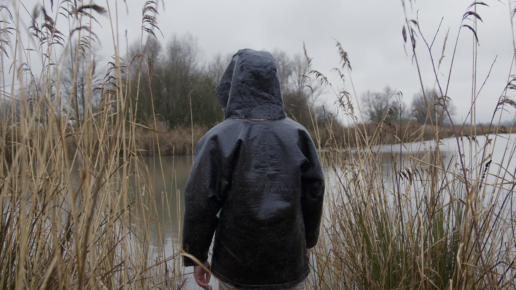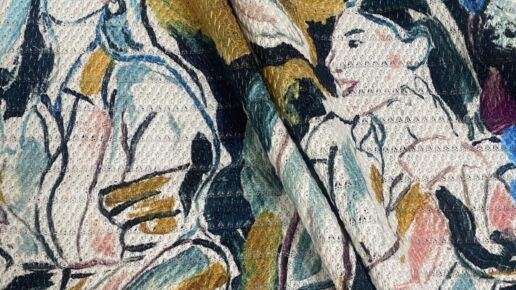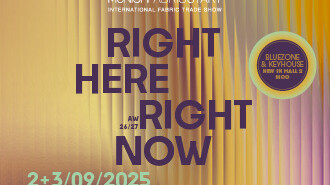Looper Textile Co. is an independent company jointly owned by the H&M Group and REMONDIS. They provide retailers and municipalities with responsible solutions to extend the useful life of garments and textiles through re-use and recycling. At Munich Fabric Start, we are excited to welcome Looper Textile Co. as one of the key players at the upcoming KEYHOUSE during the next show on January 21 + 22, 2025 in Munich. Learn more about Looper Textile Co.‘s mission to give unwanted garments a second life and how they contribute to increasing the likelihood that each garment meets its intended end state. Here’s how:
When it comes to unwanted garments, the challenges we face today are pretty overwhelming. Each year, an estimated 100 – 150 billion items of clothing are produced globally.
- The majority of these textiles are unfortunately fated to go to waste, contributing to resource depletion and environmental damage.
- Globally, around 87% of discarded textiles directly end up in wrongful disposal, while more than 90% are reusable and recyclable.
- Today, less than 1% of used clothes and other textile materials are recycled into new textile products. At Looper Textile Co., they keep textiles out of wrongful disposal and provide solutions to extend the life of garments that are reusable. For those that can’t be reused, they ensure that the materials are recycled at their highest value.

At Looper Textile Co., they keep textiles out of wrongful disposal and provide solutions to extend the life of garments that are reusable. For those that can’t be reused, they ensure that the materials are recycled back into the loop at their highest value.
They collect and sort garments to extend their useful life:
Collect: They collect used and unwanted garments from retailers (including leftovers, customer returns, stop orders, faulty items, and post-consumer garments collected in stores or via post). They also collect post-consumer textiles in communities (street collection), via charity shops, and directly from consumers.
Re-use: They extend the useful life of products (garments, shoes, accessories) through responsible reuse. The majority of garments they collect are eligible for reuse. At Looper Textile Co., facilities, they sort pieces by piece into more than 200 categories so they can meet customer needs and ensure that garments will have the best possible new life.
Recycle: They have developed an industry-leading near-infrared (NIR) sorting line equipped with optical sensors, enabling them to detect material composition and color and thereby meet the requirements of closed-loop recyclers. For textiles where closed-loop recycling is not an option yet yet (currently the majority), they supply to open-loop recycling solutions (wiping cloths, nonwovens for insulation, and automotive).
Recovery: A small remainder of garments that are contaminated or ineligible for reuse or recycling are disposed of in established waste facilities, prioritizing energy recovery whenever possible.
„By investing in advanced sorting technologies, Looper Textile Co. is positioning itself as a key feedstock supplier for scalable textile-to-textile recycling solutions.” – Hélène Smits, Head of Business Development & Partnerships
Looper Textile Co. is a trusted partner in preparing garments for the next phase of their lifecycle. The bold ambition and strong heritage of this young company lies in understanding the retailer’s perspective and best-in-class operations. They are:
SOLUTIONS ORIENTED:
They meet you where you are: They provide custom solutions depending on the starting point and ambition level of the brand or retailer. This may range from securing responsible handling of unwanted garments to capturing post-consumer fibers to be introduced back into brand supply chains.
Circular supply chains: They actively support closed-loop trials to kick-start the flow of secondary raw materials into your supply chains.
Global turn key solutions: They operate three facilities in Europe, and through their global partner network, they are able to provide our solutions across all global markets. Their partners uphold their standards and share their commitment to giving unwanted garments a second life in a reliable and transparent way.
OPEN & TRANSPARENT:
Monthly Reports: They provide end-to-end visibility of what happens to the textiles from collection to sales markets in clear and engaging monthly reports.
Authenticity: They are straightforward about the challenges and opportunities they see, as well as their approach to each.
Customer Engagement: They can help you create a compelling narrative for your customers and answer any questions they might have.


INVESTED IN PROGRESS:
Automated Sorting for Circularity: They continue to invest in improving and scaling their automated sorting capabilities in order to supply textile feedstock to closed-loop recyclers with the right specifications. They are taking part in several trials and commercial pilots with fiber recyclers and manufacturers that bring recycled textile materials back into new products.
Responsible Re-Use: They are pushing for enhanced visibility practices within their sector via deep dives into reuse sales markets and transparent reporting. Their leadership in these areas contributes to more secure sales channels and increases the likelihood that each garment meets its intended end state. They are also involved in piloting solutions for end-of-life textiles in one of their main re-use markets in order to tackle the textile waste problem that is present there.
BEYOND COMPLIANCE:
With the introduction of the EU’s Extended Producer Responsibility (EPR) schemes for textiles and the Eco-design for Sustainable Products Regulation (ESPR), brands and retailers face increasing pressure to take responsibility for their products throughout their lifecycle, from design to production to end-of-life. Additionally, sustainability-conscious consumers are demanding transparency and ethical practices, pushing brands to adopt circular business models.
Whether you are focused solely on compliance, regard circularity as a key strategic advantage for your business, or anything in between, they can help!
Looper Textile Co.’s solutions are in accordance with ESPR, EPR, and other relevant legislation, and they ensure that you not only meet your producer requirements but also help you achieve your sustainable ambitions.



Visit them at the KEYHOUSE to discover the possibilites for your own brand. Don’t miss them on the KEYHOUSE stage with valuable insights.
THIS MIGHT BE ALSO INTERESTING FOR YOU
MUNICH FABRIC START – September 25 closing report
4. September 2025
At its 56th edition, MUNICH FABRIC START reinforced its clear positioning. Over two days, the Munich textile trade show brought the fashion industry together with its four show-in-show formats.
Materials as Agents of Change with Simon Angel
1. September 2025
Each season, the Sustainable Innovations forum brings together projects that provoke, inspire, and challenge assumptions. This year is no exception, with work ranging from bio-luxury couture to energy-generating textiles and regenerative materials grown from wetlands.
AUTUMN.WINTER 26/27 FABRIC HIGHLIGHTS & MATERIAL NOVELTIES – PART X
31. August 2025
For the first time in Germany, S2G XR (Style 2 Garment eXtended Reality) will present a live demo of its 3D textile configurator at booth A4.20 Not a teaser.
Living Matter: Bio-Luxury for Future Materials
31. August 2025
Indigo, a colour with a lot of history, is the main focus of this project. Denim has always meant strength and durability, and its roughness is linked to work and usefulness.
BLUEZONE NEWS FOR SEPTEMBER 2025 – PART VI
31. August 2025
At DNM Denim, the journey continues. Inspired by nature’s cycles and guided by Flow Theory, the company moves from Challenge to Focus, and now to Freedom—the phase where potential becomes power.
BIOTEXFUTURE: How to Make Textiles from Fossils
30. August 2025
The program is a group of businesses and universities working together to find scalable, bio-based alternatives.
Additionals Trends Autumn.Winter 26/27 – Part 8
30. August 2025
This collection embodies softness, simplicity, and flow – from soft-touch labels and stretchable materials that move with the body, to a calming palette of pastel tones and organic, natural fibers.
Wetlands Matters – by Marc Wijkmans
29. August 2025
Wijkman’s idea came from a simple but important observation: animals carry seeds across ecosystems in their fur.
AUTUMN.WINTER 26/27 FABRIC HIGHLIGHTS & MATERIAL NOVELTIES – PART IX
29. August 2025
The designs embrace various trend themes – sometimes subtle, sometimes expressive – and lend each fabric its own distinctive character.
MUNICH FABRIC START September 2025 – Outlook
29. August 2025
The countdown is on: in just three weeks, Munich will once againbecome the epicentre of the European fashion and textile industry. During the first week ofSeptember, MUNICH FABRIC START Exhibitions GmbH will unite all key fashion segments underone roof, reaffirming its position as one of Europe’s leading textile trade shows.


